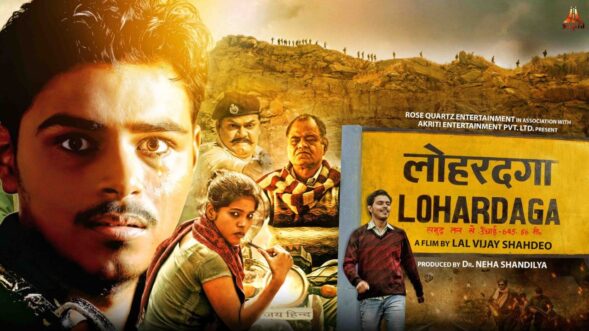
As Gauhati is left behind and the bus begins to ascend the winding hilly terrain, you get your first whiff of the salubrious climate that awaits you in the hills of Meghalaya ahead.
It was both a joy and a relief to leave the sweltering Assamese capital behind and begin the ascent up the tortuous winding roadway, the famed GS Road that would take me to my home a hundred-odd kilometres away in Shillong.
The GS Road was a humble two-lane affair those days, one for up traffic, the other for downgoing vehicles. But despite this limitation of space, traffic was light and therefore passed freely without hindrance. The highway itself was well maintained, drivers were highly skilled, and accidents were seldom reported.
Seated beside me in the bus that day was a Pastor who had arrived from Kerala, on his way to Shillong to attend a Christian conference. Big, burly, dark-skinned and bear-like, the pastor was a jovial man and as friendly as a St. Bernard. He was booked to stay at a place in Happy Valley for the duration of his stay in Shillong and had been provided with an address. But he was new to the city, so could I help him to find his way about in town?
I promised him I would do all that I could possibly do to assist him in the matter when we reached Shillong.
So up the hills, we laboured, the bus wheezing and whining, going past Byrnihat and its agro-industries, past tiny homes set amidst clumps of tall stately trees, each bend in the roadway being marked with a prominent highway sign, each turn bringing us closer to our goal. A two-hour ride through the densely forested hills the bus pulled into the little town of Nongpoh. We screeched to a halt.
Everyone gets off the bus at Nongpoh to stretch his legs. There was but a single restaurant at the bus stop in those days, and I could see it did good business, seeing a regular stream of customers all through the day. The place was distinguished by a constant clatter of plates and the tinkle of tea cups, with grubby waiters rushing to and fro serving up orders.
The fare offered consisted mostly of samosas, or shingaras as they were known — shingaras served up with tea for the weary traveller. A small selection of sweets was also seen on sale.
But I was in no mood for shingaras, and neither was the pastor who accompanied me. I therefore turned my attention to other vendors who sold their wares by the roadside.
There were stalls where you could buy cigarettes, paan and betel nut, stalls selling pineapples and oranges, and stores where you could buy bakery goods and lollipops too.
Following a halt lasting about fifteen minutes, we scrambled back into the bus and the journey was resumed. The pineapple slices I had bought a moment ago kept me good company while watching the undulating hills slide past, a wealth of vegetation and flora springing up before my eye at every turn.
The highway has its own secrets — tales of intrigue and strange happenings that are known only to those who traverse its length day after day. One such event was to unfold before my own eyes that day.
Leaving Nongpoh behind, we travelled a while before coming up against a low-lying bridge wide enough for only one vehicle to pass through at a time. Drivers on either side would slow down at the approach, looking ahead to see if there was anything coming the other way.
Our driver spotted a truck far off, coming from the opposite direction at speed. We were in fact quite close to the bridge, and going by the rules of the highway, the truck should have slowed down to a halt allowing us to pass first. But the reckless lorry was seen bearing down the road at speed, showing no signs of slowing down.
Knowing that if we continued, we would come up against each other on the bridge, our driver wisely decided to halt, allowing the oncoming truck access to the bridge first.
It was a classic case of selfishness and reckless driving displayed so often by truck drivers on the highway.
When the lorry had come abreast of us, our driver signalled the erring lorryman to halt. There followed a heated verbal exchange between the two men, but our driver had the last word in the matter. He yelled out “aap log bahut zulm karte hain…”
The lorryman was left with nothing to say in reply. He could only hang his head in shame.
On the approach to Barapani it had grown dark and a dense fog was now seen to drift in. Visibility was poor making progress slow and difficult.
The bus had slowed down to nearly a walking pace now. For the very first time in life, I would realise the vital role played by the concrete slabs that lined the edge of the roadway at intervals, painted in black and white squares. Those concrete blocks were no adornment; they were a lifesaver. They were all that we could see in the fog and were meant as signposts to serve as a warning that a precipice lay beyond. The driver was aided in steering entirely by the faint appearance of those blocks!
We pulled into Shillong in cold weather, much behind schedule late in the evening. As it would turn out, I was not familiar with the location in Happy Valley the pastor was bound for, and I was apprehensive about entrusting the newcomer to a taximan’s whims so late in the night. I therefore took the gentleman along to meet the parson of our cathedral, the Reverend Huxley Lyngdoh, who lived next to the All Saints’ Church of Shillong.
I remember Parson Lyngdoh as a short-statured man, a soft-spoken old gentleman abounding in grace and kindliness. His demeanour was marked by a calm mind and gentleness of spirit that would endear him to anyone who had any reason to be in his presence. He was well versed in Scripture, his sermons were well thought out and were appreciated by his congregation, and he often pointed the way of virtue by setting first an example himself.
To our beloved parson then we would turn late in the night that day, looking for directions that were known to be trustworthy.
It was getting close to 10 pm when we called on the parsonage, a time when the residents of the home were preparing to retire for the night. Pastor Lyngdoh and his family were baffled by my strange appearance at this unearthly hour of the night. He was somewhat indisposed at the time, but nevertheless, he rose from his bed with some effort to attend to us.
The two pastors shook hands amiably. Parson Lyngdoh studied the address and was soon able to identify the location sought by the new arrival, providing him with directions as to how to get to the place by hiring a taxi.
And thus a day that had begun with a tiresome arrival by train in Gauhati, ended finally in Shillong with a surprise visit to the much-revered parson of the All Saints’ Cathedral in the dead of the night.






